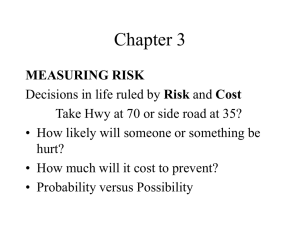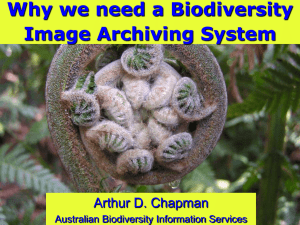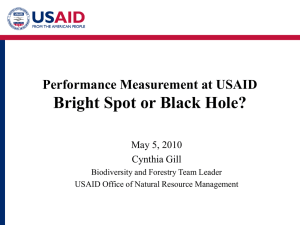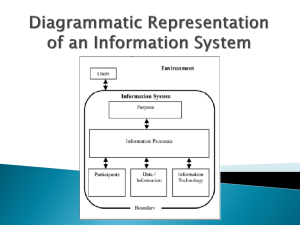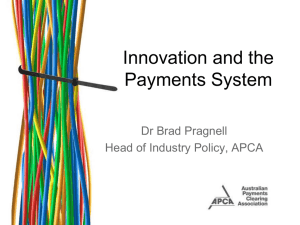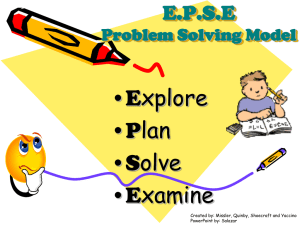1 - WWF Belgium
advertisement
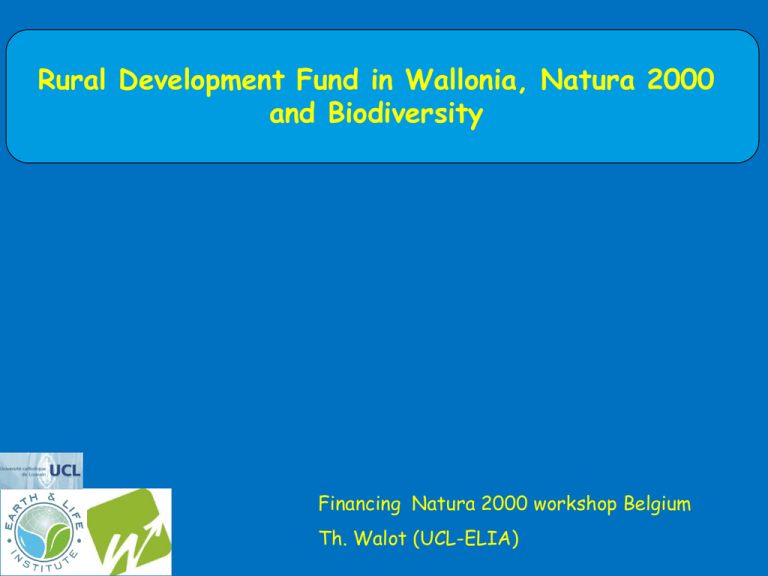
Rural Development Fund in Wallonia, Natura 2000 and Biodiversity Financing Natura 2000 workshop Belgium Th. Walot (UCL-ELIA) Content 1. Walloon Rural Development Programme (WRDP) 2. Natura 2000 measures in WRDP: N2000 payments and habitat recovery payments 3. AEM in WRDP: N2000 agricultural habitat management and nature development Conclusions 1. Walloon Rural Development Programme CAP pie-chart – EAFRD axes EAFRD– Axis EAFRD budget Million euros 1. Economic performance improvement 68 – 29 2. Environment and rural area improvement 133 - 57 3. Quality of life improvement and economical diversification 19 - 8 Walloon CAP budget (2007-2013 1st & 2nd pilars) =2, 263 billion € 4 Leader 3-1 5. Technical assistance 10 - 4 EAFRD= 233 million € Total Walloon EAFRD 233 -100 1. WRDP Main measures – Link with N2000/biodiversity? Axis Main measures Biodiversity/N2000 ? 1. Economic performance improvement Support to investment & to No young farmers 2. Environment and rural area improvement - AE payments - Less favourised areas payments - N2000 payments (agriculture, forestry) - Unproductive investments Yes No 3. Quality of life improvement and economical diversification Tourism promotion, rural cultural heritage , non agricultural diversification, … Some (N2000 habitat restoration) 4. Leader Local projects: mobility, tourism, employment, cultural heritage …. Poor (ecological network promotion) Yes Yes (banks fencing) 1. Walloon Rural Development Programme Environment and rural area axis Total Walloon EAFDR budget = 233,2 million € Environmental « axis 2 »: 153 M € Biodiversity/N2000 expenses in Environmental axis: 132 M€ (>80%) 2. Natura 2000 payments and habitat recovery payments in WRDP 2.1. N2000 - Some landmarks 13% of Wallonia, 221 000ha, 4 500 farmers, 60 000 landowners 15 % AGRICULTURE 75 % FORESTS N2000: Habitats maps with 15 main « Management Units » in relation with ecological characteristics and management prescriptions « Aquatic management unit » MU 1 « Open space habitat unit » e.g. hay meadow Management Unit 2 Photo J.-P. Winants r « Animal habitat unit » MU 3 e.g. Lanius collurio (red backed shrike) High priority forest MU6 2.2. N2000 payments – Why?, How much? Type of specifications Compensation payments (€)/year x ha) EAFRD contributions (€ 2007-2013) Agricultural No ploughing, no 100-440 plots fertilisation, no mowing before 15 of June, …. 5 700 000 Forestry plots 90 000 Quota of old and 20-40 dead trees should be left « unharvested »; mixed forest edges mandatory, … 2.3. Habitat restoration payments Why? To improve conservation status of N2000 habitats e.g. chalk grasslands, moors, alluvial wet meadows, great crested newt ponds, …. What for? Bushes clearing, fencing, spruces felling, filling of ditches, digging of ponds, … Ecological restoration of N2000 habitats Ecological restoration of N2000 habitats Ecological restoration of N2000 habitats 2.3. Habitat restoration payments IMPLEMENTATION? « Ambitious project » (budget 9 million €) BUT Very poor implementation (spendings: 500 000 € - 15% of budget), roughly 100 ongoing files = circa 200 ha) WHY? - « Spruce lobby » - Late and unstable regional legislation - Laconic support from public authorities Personal point of view 2.4. River and brook bank fencing in pastures Aim: Ecological quality of water and banks 2.4. River and brook bank fencing in pastures Should currently being implemented Budget: 3 600 000 € 3. Agri-environmental scheme Aims of the scheme: - Management of HNV areas and nature development - Protection of natural resources (water, soil) - Protection of endangered agricultural breeds - Farm scale: general environment improvment 3. Agri-environmental scheme –Biodiversity impact ranking Methods 0=>10 1 Hedge conservation 4 2 Tree, bush , small wood conservation 8 3 Pond conservation 8 4 Natural pasture/hay meadow 7 5 Grass strip in arable land 7 6 Extensive grass strip in pasture or hay meadow 5 7. Autumn cover crop 1 8. Extensive cereal farming 2 9. Low livestock density (farm level) 7 10. High natural value hay meadow and pasture 10 11. Field strips for flora fauna and landscape in arable land 10 Action plan – Organic farming 10-9 Agro-environment, N2000 and biodiversity Aim: Upkeep of HNV areas – Extensive farming of grassland Upkeep: very late mowing (July) 450 euros/ha per year 6 500 ha , 7% of farmers, 25% of N2000 grasslands Good results on habitat conservation status Upkeep: very low level grazing Agro-environment and biodiversity Aim: Landscape and nature development in grassslands «Natural grassland » €200-240/ha per year Extensive farming 14 000ha, 3% of grasslands Agro-environment and biodiversity Aim: Landscape and nature development: « Preserving small natural features » Hedges: 50 – 60 € / 200m per year 12 500 km under contract Trees and bushes: 25 – 30 € / 10 per year 145 000 trees or bushes Ponds: 50 – 60 € / pond per year 4 500 ponds Agro-environment and biodiversity Aim: Landscape and nature development in arable land: « Field strips » A.Extensive grass strip: meadow flowers: € 1 250. ha per year A+B+C = 1 500 km Extensive grass strip: Erosion reduction and biodiversity improvement € 900/ha per year 2 200 km B.Extensive crop + beetle bank for birds € 1 250/ha per year A+B+C=1 500 km C. Extensive crop + arable flowers €1 250/ha per year A+B+C= 1500 km Agro-environment and biodiversity Aim: Protection of streams/rivers + banks (biodiversity and water) Extensive strips along streams in grasslands. Upkeep: summer mowing or grazing. Extensive grass seeded strips instead of arable land along streams. Upkeep: summer mowing. €900/ha per year 1 500kms, 15% of river banks Agro-environment and (agro)biodiversity Keeping of traditional endangered breeds • 600 farmers €120 per cow per year €200 per horse per year €30 per sheep per year Agro-environment in Wallonia General environment improvement on global farm scale €100/ha per year , max 1LU/ha. 800 farms, 5% of farms 150-450€/ha per year 1100 farms, 8% of farms Extensive breeding (AEM7) and organic farming (AEM 11) Conclusions • EAFRD in Wallonia is largely implemented in measures in relation with N2000 management and improvement of biodiversity (>50 % budget). • Needs are still very important (>10 000 more hectares should be under AE extensification measure; 13 000 ha of N2000 habitats shoud be restored according to the latests estimations). • AEM scheme is the main measure in terms of budget. Participation is high but not high enough for targeted methods. • AEM scheme has (very) likely local positive impacts on biodiversity (conservation habitat status, impact on butterflies and bees, farmland birds and rare weeds). • Presentation is based on 2007-2013 Walloon RDP. • Next RDP still being discussed ; Political and technical difficulties are observed (budget restrictions and balance between agricultural and environmental support). • Main measures 2007-2013 in relation with Natura 2000 and biodiversity should be in the next WRDP BUT new developements will be few in the coming years. Thank you for your attention!
